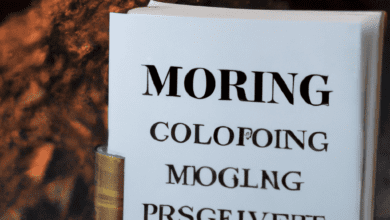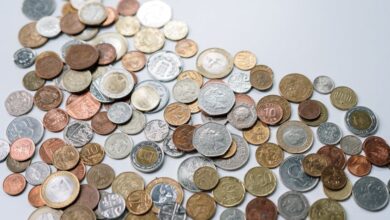Metals in Motion: Analyzing Industrial Demand, Investment Strategies, and Economic Indicators

In today's rapidly evolving economic landscape, metals play a pivotal role not only as essential components in various industries but also as significant investment assets. From the traditional allure of precious metals like silver and platinum to the critical importance of industrial metals such as copper and aluminum, understanding these materials is essential for both investors and industry leaders. This article delves into the multifaceted nature of metals, exploring silver's dual role in industrial applications and as an investment vehicle, analyzing how copper prices serve as indicators of global economic health, and examining the surging demand for rare earth metals driven by green energy technologies. Additionally, we will compare platinum and palladium as investment options, discuss the impact of inflation on metal prices, consider the future of aluminum in sustainable economies, and evaluate how mining regulations shape the metal market. Join us as we navigate the intricate web of metal markets and their implications for investment and industry alike.
- 1. "Silver's Dual Role: Balancing Industrial Demand and Investment Value"
- 2. "Copper Prices as Economic Barometers: Insights into Global Health"
1. "Silver's Dual Role: Balancing Industrial Demand and Investment Value"
Silver occupies a unique position in the commodities market, serving both industrial and investment purposes. This dual role has significant implications for its price dynamics and overall demand.
On the industrial side, silver is a critical component in various applications, including electronics, solar panels, medical devices, and batteries. Its high electrical conductivity and antibacterial properties make it indispensable in the manufacturing of cutting-edge technologies. As industries continue to innovate and expand, particularly in sectors like renewable energy and electronics, the demand for silver is expected to grow. For instance, the increasing adoption of solar energy technologies has driven heightened interest in silver, as it plays a vital role in photovoltaic cells.
Conversely, silver is also regarded as a safe-haven asset, similar to gold. During times of economic uncertainty or inflation, investors often turn to silver as a hedge against currency devaluation and market volatility. This investment demand can significantly influence silver prices, especially when global economic conditions are unstable. The interplay between industrial demand and investment interest creates a complex pricing environment, where shifts in one sector can have ripple effects on the other.
Moreover, the balance between these two roles is affected by broader economic trends. For example, during periods of robust economic growth, industrial demand may surge, driving prices up. Conversely, in times of economic downturn or crisis, investment demand typically increases, which can also elevate prices. Therefore, understanding silver's dual role is crucial for investors and analysts alike, as it underscores the metal's significance in both the industrial landscape and as a strategic asset in investment portfolios.
In summary, silver's unique position as both an industrial commodity and a financial safeguard highlights its importance in the global market. Its ability to adapt to changing economic conditions makes it a vital player in the ongoing evolution of both industrial applications and investment strategies.
Silver plays a dual role in both industrial and investment markets, making it a unique metal in the commodities landscape. On the industrial side, silver is highly sought after for its conductivity, thermal properties, and antibacterial qualities. It is extensively used in electronics, solar panels, and medical applications. The growing demand for renewable energy technologies, such as photovoltaic cells, has further bolstered silver’s industrial usage, as these technologies increasingly rely on silver for efficiency.
In the investment realm, silver is often viewed as a safe haven asset, similar to gold. Investors turn to silver during times of economic uncertainty or inflation, as it tends to retain value. The metal's price can be influenced by various factors, including supply and demand dynamics, geopolitical tensions, and market speculation. Historically, silver has shown a correlation with gold prices, often moving in tandem during market fluctuations.
Copper prices serve as a barometer for global economic health, largely due to its widespread use in construction, manufacturing, and electrical applications. When economies are booming, the demand for copper rises, leading to higher prices. Conversely, during economic downturns, demand typically wanes, resulting in falling prices. This correlation makes copper a critical indicator for investors and analysts looking to gauge economic trends.
Moreover, the impact of green energy technologies on rare earth metals cannot be overstated. As the world shifts towards sustainable energy solutions, the demand for rare earth elements, which are essential for many advanced technologies, is expected to surge. These metals are crucial for the production of electric vehicles, wind turbines, and other clean energy technologies, creating a competitive market landscape that is likely to drive prices higher.
When comparing platinum and palladium as investment options, several factors come into play. Traditionally, platinum has been viewed as the more prestigious metal, often associated with luxury items. However, palladium has gained popularity due to its critical role in catalytic converters for gasoline engines, leading to increased demand and rising prices. Investors must consider market trends, supply constraints, and technological advancements in automotive manufacturing when deciding which metal may offer better returns.
In diversifying investment portfolios, metals can play an essential role due to their intrinsic value and hedge against inflation. Precious metals like gold and silver are often considered safe-haven assets, while industrial metals like copper and aluminum can provide growth potential in expanding economies. Including a mix of both types of metals can help investors mitigate risks associated with market volatility.
Inflation significantly impacts the prices of both precious and industrial metals. As the cost of living rises, the purchasing power of currency declines, leading investors to seek tangible assets like metals to preserve wealth. This demand can drive prices higher, creating a cyclical relationship between inflation and metal prices.
Looking ahead, aluminum is poised to play a crucial role in a sustainable economy. Its lightweight properties and recyclability make it an ideal material for energy-efficient products, including electric vehicles and packaging. As industries strive to reduce their carbon footprints, the demand for aluminum is expected to increase, positioning it as a key player in the transition to a greener economy.
Lastly, mining regulations can have a profound impact on metal prices. Stricter environmental regulations and geopolitical considerations can limit supply, driving prices upward. Conversely, favorable regulatory changes can enhance production capabilities, leading to increased supply and potentially lower prices. Understanding the regulatory landscape is essential for investors and stakeholders in the metals market.
2. "Copper Prices as Economic Barometers: Insights into Global Health"
Copper prices have long been viewed as a reliable indicator of global economic health, earning the nickname "Dr. Copper" for its ability to forecast economic trends. This reputation stems from copper's extensive use in various industries, including construction, electronics, and transportation. As an essential component in electrical wiring and plumbing, fluctuations in copper prices often reflect changes in industrial activity and consumer demand.
When the global economy is thriving, demand for copper typically increases due to heightened construction projects, manufacturing, and infrastructure development. Conversely, during economic downturns, copper prices tend to fall as industries reduce production, leading to lower demand for the metal. For instance, significant price drops can signal economic slowdowns, as seen during the 2008 financial crisis and the COVID-19 pandemic, where copper prices plummeted due to reduced industrial output worldwide.
Additionally, copper prices are influenced by macroeconomic factors such as inflation rates, interest rates, and currency strength. For example, a weakening U.S. dollar often results in higher copper prices, as commodities priced in dollars become cheaper for foreign buyers, stimulating demand. Conversely, rising interest rates can dampen investment in construction and infrastructure, leading to a decline in copper prices.
Emerging markets, particularly in Asia, play a crucial role in shaping copper demand. Rapid urbanization and industrialization in countries like China and India drive significant consumption of copper for electrical grids, renewable energy projects, and manufacturing. Therefore, monitoring these markets can provide valuable insights into future copper price movements and, by extension, the health of the global economy.
In summary, copper prices serve as a critical economic barometer, reflecting the dynamics of global industrial activity and consumer demand. Analysts and investors closely watch these price trends to gauge economic conditions, making copper an essential component in understanding the broader economic landscape.
In conclusion, the multifaceted roles of metals in both industrial applications and investment strategies underscore their significance in the global economy. Silver, with its unique position as both a critical industrial component and a sought-after investment asset, exemplifies this duality. Similarly, copper prices serve as a reliable indicator of economic health, reflecting broader trends and challenges within the market. The growing emphasis on green energy technologies is reshaping the demand landscape for rare earth metals, highlighting the interplay between technological advancement and resource availability.
In the comparison between platinum and palladium, investors must weigh the merits of each in the context of market dynamics and personal investment goals. Diversifying investment portfolios with metals can provide a hedge against inflation, which continues to influence the prices of both precious and industrial metals. Furthermore, as the world moves toward a sustainable economy, aluminum's role is poised to expand, driven by its lightweight properties and recyclability.
Lastly, the impact of mining regulations on metal prices cannot be overlooked, as they shape supply chains and affect market stability. Together, these factors paint a complex picture of the metal markets, offering insights that are essential for investors and industry stakeholders alike. As we look to the future, staying informed about these trends will be vital for making sound investment decisions and understanding the pivotal role metals play in our ever-evolving economy.





